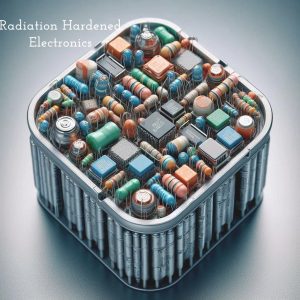The Radiation Hardened Electronics Market is expected to grow significantly over the forecast period from 2024 to 2029, driven by the increasing demand for reliable and durable electronic components in space and defense applications. The market is segmented by component, manufacturing technique, product type, application, and geography. Key components include mixed signal ICs, processors & controllers, memory, and power management. Manufacturing techniques include radiation hardened by design (RHBD) and radiation hardened by process (RHBP). Product types include single-event effect (SEE) hardened and total ionizing dose (TID) hardened components. Applications include space exploration, defense, and medical devices.

Download PDF Brochure @ https://www.marketsandmarkets.com/pdfdownloadNew.asp?id=44047967
Radiation Hardened Electronics Market Size and Growth
The Global Radiation Hardened Electronics Market is projected to grow from USD 1.7 billion in 2024 to USD 2.1 billion by 2029, at a compound annual growth rate (CAGR) of 4.8% during the forecast period.
By Component
Mixed Signal ICs: Mixed signal ICs are expected to dominate the market, accounting for the largest share due to their widespread use in space and defense applications.
Processors & Controllers: Processors & controllers are expected to grow at the highest CAGR due to their increasing adoption in advanced defense systems and space exploration.
Memory: Memory components are expected to grow at a moderate CAGR due to their increasing use in high-reliability applications.
Power Management: Power management components are expected to grow at a slower CAGR due to their relatively lower adoption in radiation hardened applications.
By Manufacturing Technique
RHBD: RHBD is expected to dominate the market due to its ability to provide high reliability and durability in radiation hardened applications.
RHBP: RHBP is expected to grow at a higher CAGR due to its increasing adoption in advanced defense systems and space exploration.
By Product Type
SEE Hardened: SEE hardened components are expected to dominate the market due to their ability to withstand single-event effects.
TID Hardened: TID hardened components are expected to grow at a higher CAGR due to their increasing adoption in high-reliability applications.
By Application
Space Exploration: Space exploration is expected to dominate the market due to the increasing demand for reliable and durable electronic components in space missions.
Defense: Defense is expected to grow at a higher CAGR due to the increasing adoption of radiation hardened electronics in advanced defense systems.
Medical Devices: Medical devices are expected to grow at a moderate CAGR due to their increasing use in high-reliability applications.
Ask for Sample Report @ https://www.marketsandmarkets.com/requestsampleNew.asp?id=44047967
By Regional Analysis
North America: North America is expected to dominate the market due to the presence of major players and the increasing demand for radiation hardened electronics in space and defense applications.
Europe: Europe is expected to grow at a higher CAGR due to the increasing adoption of radiation hardened electronics in advanced defense systems and space exploration.
Asia Pacific: Asia Pacific is expected to grow at a moderate CAGR due to the increasing demand for radiation hardened electronics in space and defense applications.
Radiation Hardened Electronics Market Competitive Landscape
The Radiation Hardened Electronics Market is highly competitive, with major players such as Analog Devices, Inc., Texas Instruments Incorporated, STMicroelectronics N.V., and Microsemi Corporation. These companies are focused on developing advanced radiation hardened components and manufacturing techniques to meet the growing demand for reliable and durable electronic components in space and defense applications.
Top Radiation Hardened Electronics Companies – Key Market Players
Microchip Technology Inc. (US), BAE Systems (UK), Renesas Electronics Corporation (Japan), Infineon Technologies AG (Germany), STMicroelectronics (Switzerland), AMD (US), Texas Instruments Incorporated (US), Honeywell International Inc. (US), Teledyne Technologies Inc. (US), and TTM Technologies, Inc. (US). SMEs/startups covered in the study are Cobham Limited (UK), Analog Devices, Inc (US), Data Devices Corporation (US), 3D Plus (France), Mercury Systems, Inc. (US), PCB Piezotronics, Inc (US), Vorago (US), Micropac Industries, Inc (US), GSI technology, Inc (US), Everspin Technologies Inc (US), Semiconductor Components Industries, LLC (US), AiTech (US), Microelectronics Research Development Corporation (US), Space Micro, Inc (US), and Triad Semiconductor (US).
